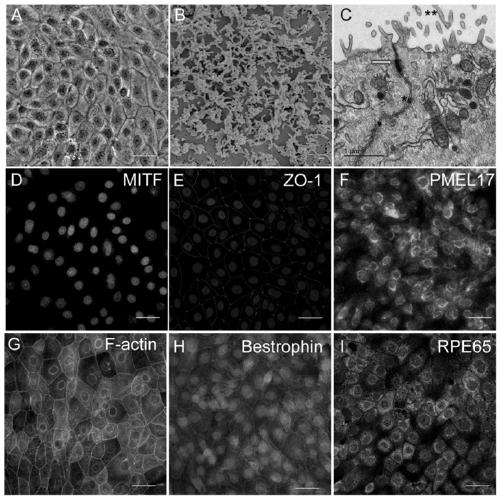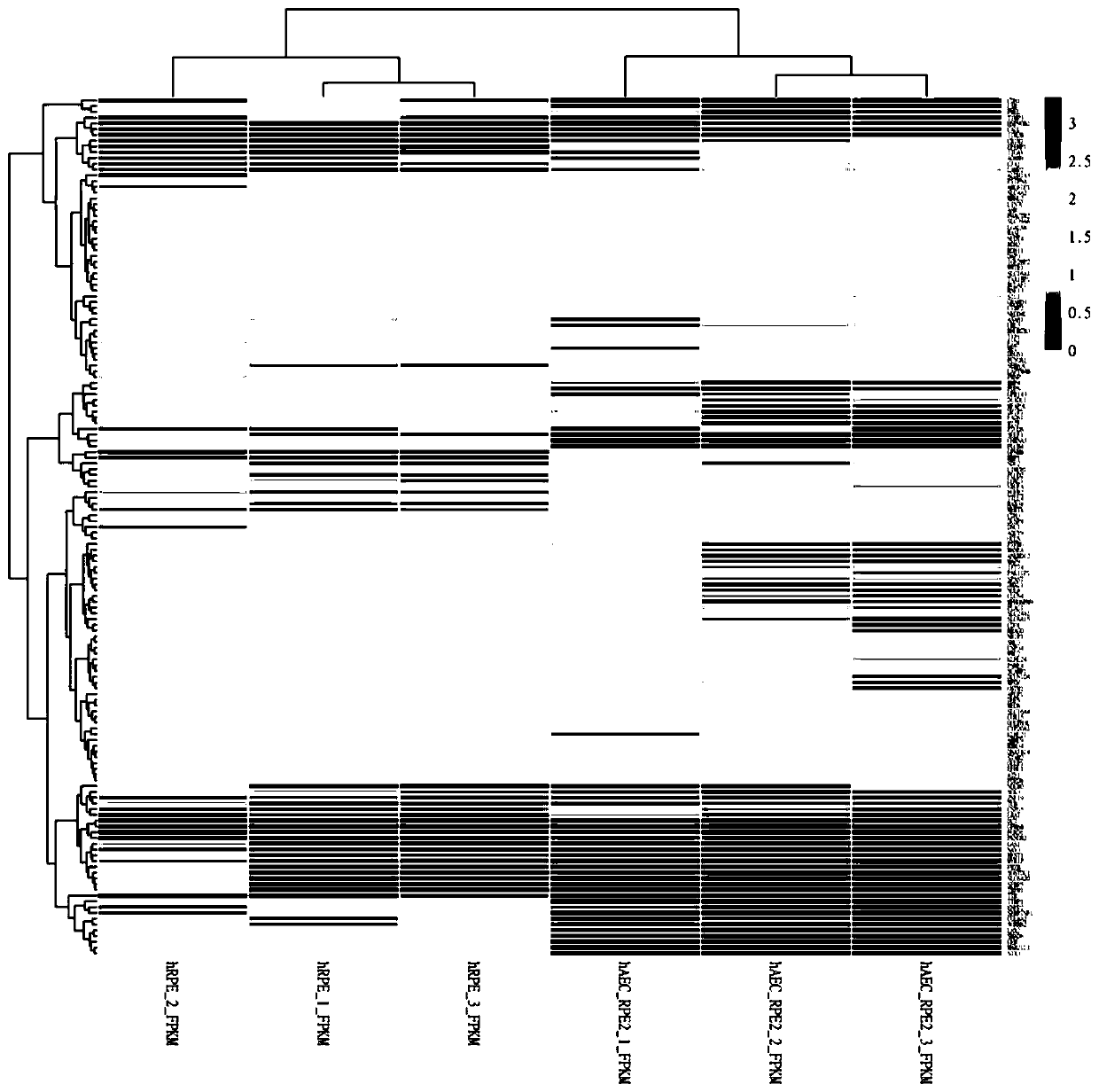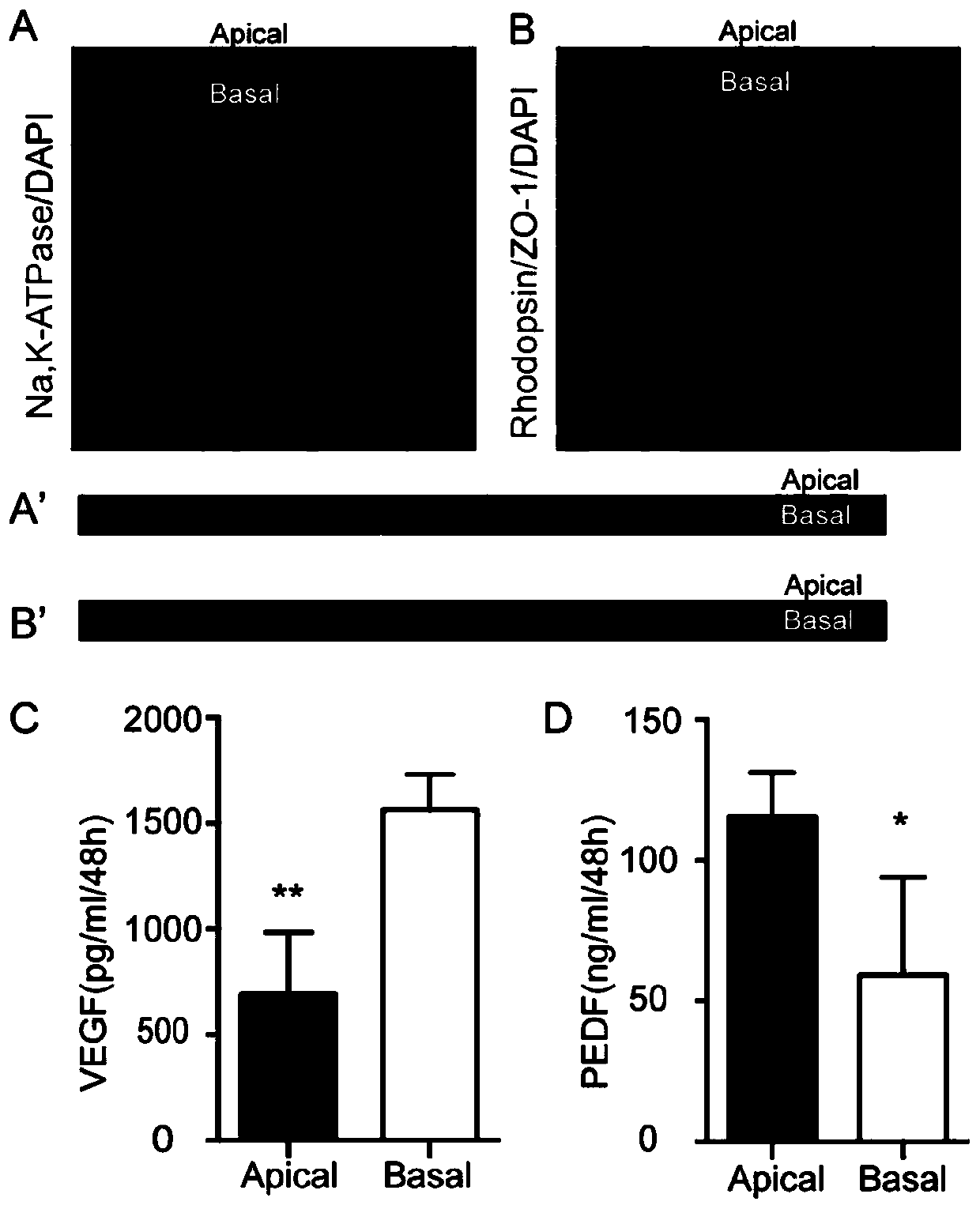Method for inducing differentiation of human amniotic epithelial cells into retinal pigment epithelial cells, and applications thereof
A technology of retinal pigment and epithelial cells, applied in the application field of the treatment of retinal degenerative diseases, can solve the problems of limited source of embryonic stem cells and complicated culture technology
- Summary
- Abstract
- Description
- Claims
- Application Information
AI Technical Summary
Problems solved by technology
Method used
Image
Examples
Embodiment 1
[0051] The preparation of embodiment 1 human amnion cell test solution
[0052] Step 1: Preparation of amnion epithelial cell culture medium: add 95ml KSR to 500ml DMEM / F12 1:1 (1X); 6.5ml 100mM L-Glutamine; 6.5ml 100mM Sodium Pyruvate; 6.5ml 100mM MEM NEAA; 2000× EGF Add before use with 100× double antibody (Penicillin-Streptomycin);
[0053] Step 2: Preparation of 2000×EGF: Add 1ml of sterile ddH2O to the 100ug EGF packaging tube, let it stand for 5-10min to dissolve, then add 4ml of diluent (PBS containing 5% trehalose), mix well and dispense into 1.5ml EP tubes, and dispense 100μl per tube;
[0054] Step 3: Preparation of digestion stop solution: DMEM / F12 1:1(1X)+10%FBS;
[0055] Step 4: Preparation of cryopreservation solution: 40% FBS + 50% culture medium + 10% DMSO.
Embodiment 2
[0056] Example 2 Separation of human amniotic epithelial cells
[0057] 1. The source of human amniotic membrane
[0058] After the mother’s authorization and consent, the placental tissue of the healthy mother (HIV, syphilis, hepatitis A, hepatitis B, hepatitis C and other serological reactions were all negative) after caesarean section was taken, the placenta was cut with a cross knife, and the whole amniotic membrane was obtained by mechanical separation.
[0059] 2. Isolation of human amniotic epithelial cells
[0060] Step 1: Wash the amniotic membrane three times with sterile PBS solution added with double antibody (P / S), wash away blood and other impurities, and transfer the amniotic membrane to a 50ml centrifuge tube.
[0061] Step 2: Add 10ml of 0.25% trypsin (bathed at 37°C in advance) to digest for 30s, invert 20 times, and transfer the amnion into another 50ml centrifuge tube.
[0062] Step 3: Add 15ml of 0.25% trypsin to the centrifuge tube (bathed at 37°C in ad...
Embodiment 3
[0066] Embodiment 3 Inoculation culture and cryopreservation of human amniotic membrane epithelial cells
[0067] 1. Cell counting culture: 1×10 7 Cells were seeded into a 15 cm Petri dish. The culture medium was changed after the cells adhered to the wall, and the culture medium was changed every three days thereafter.
[0068] 2. Cell cryopreservation: Digest the cells after the cells cover the plate for cryopreservation: add 5ml trypsin to a 15cm dish, observe under the microscope after 10 minutes, and add when the cells become round and all the cells become suspended when the plate is shaken on the plane. Amount of digestion stop solution to stop digestion. Use a micropipette to blow down the cells on the culture dish in the same direction, transfer to a 15ml centrifuge tube, centrifuge at 800g for 3min, collect the cells and then count the cells. Add cryopreservation solution into the cryopreservation tube, mark the date of freezing, batch and cell number, put the cell...
PUM
 Login to View More
Login to View More Abstract
Description
Claims
Application Information
 Login to View More
Login to View More - R&D
- Intellectual Property
- Life Sciences
- Materials
- Tech Scout
- Unparalleled Data Quality
- Higher Quality Content
- 60% Fewer Hallucinations
Browse by: Latest US Patents, China's latest patents, Technical Efficacy Thesaurus, Application Domain, Technology Topic, Popular Technical Reports.
© 2025 PatSnap. All rights reserved.Legal|Privacy policy|Modern Slavery Act Transparency Statement|Sitemap|About US| Contact US: help@patsnap.com



